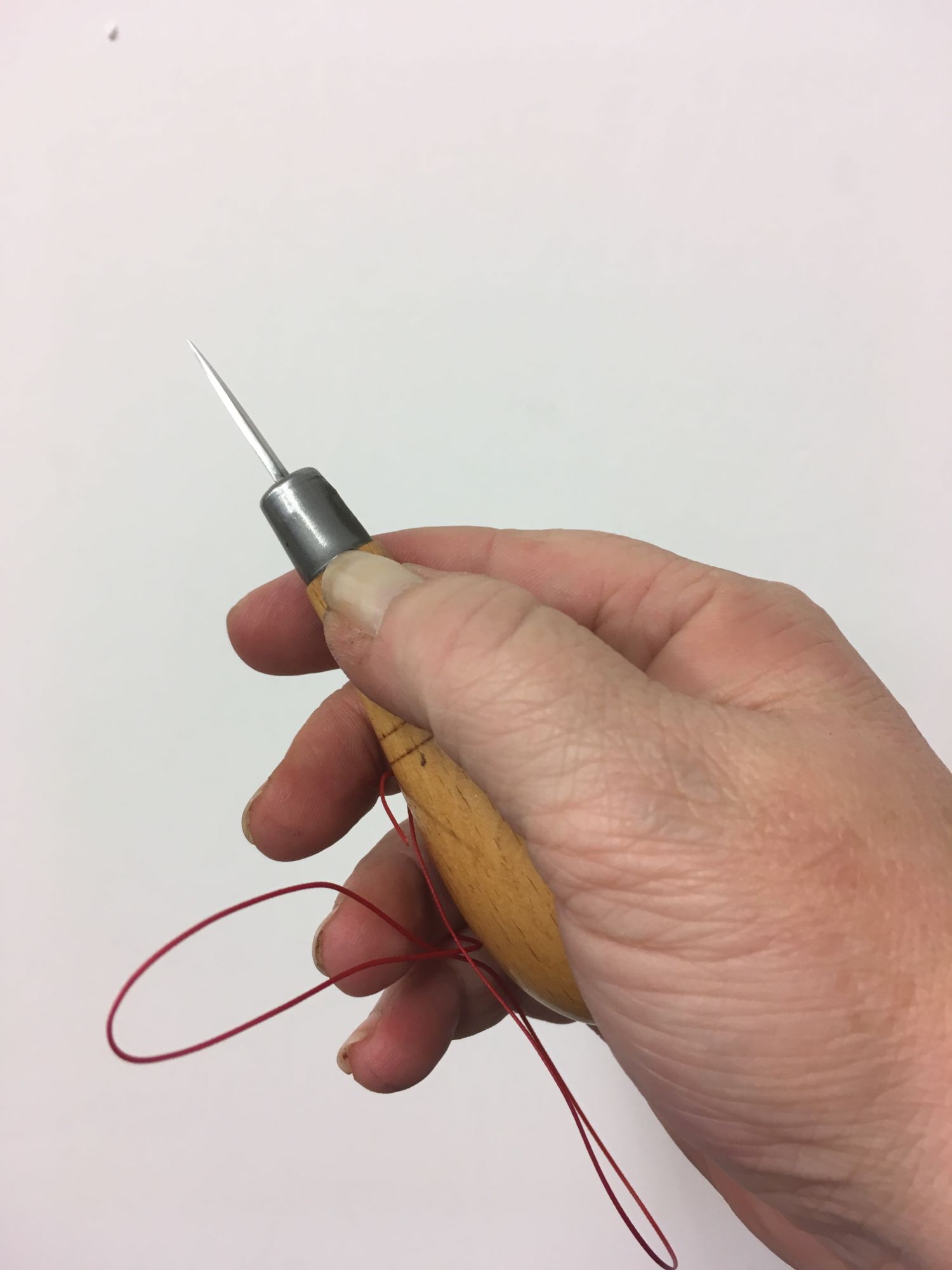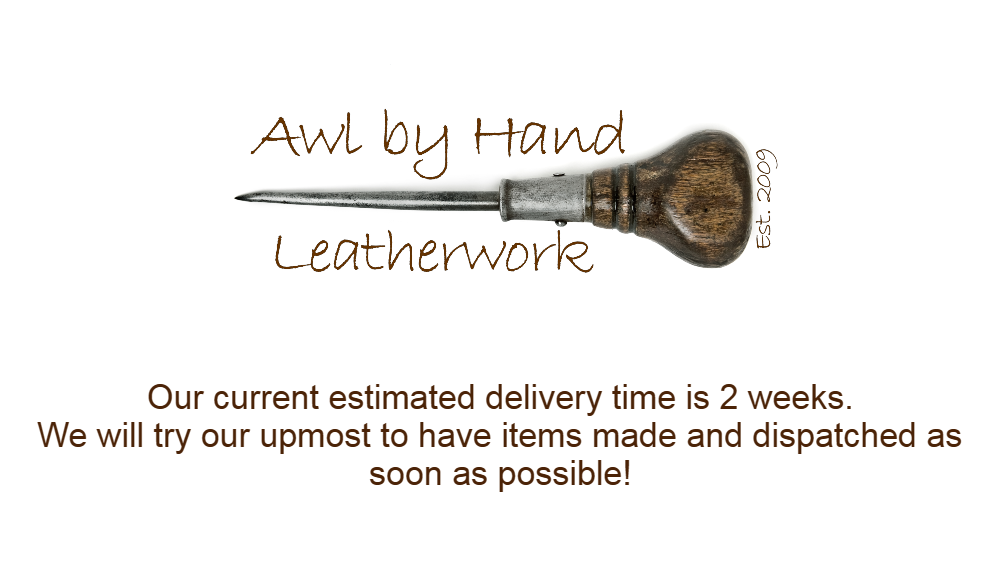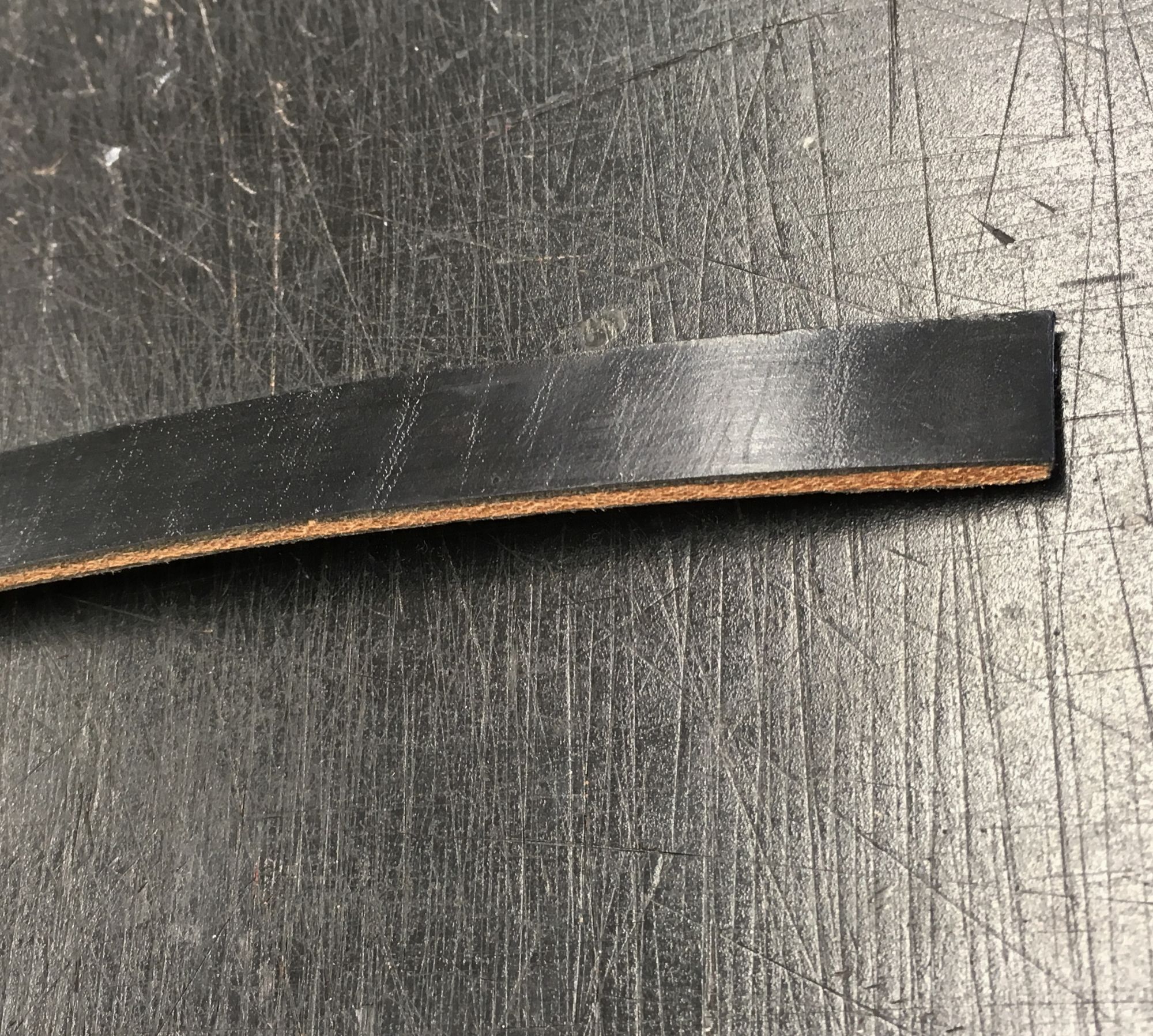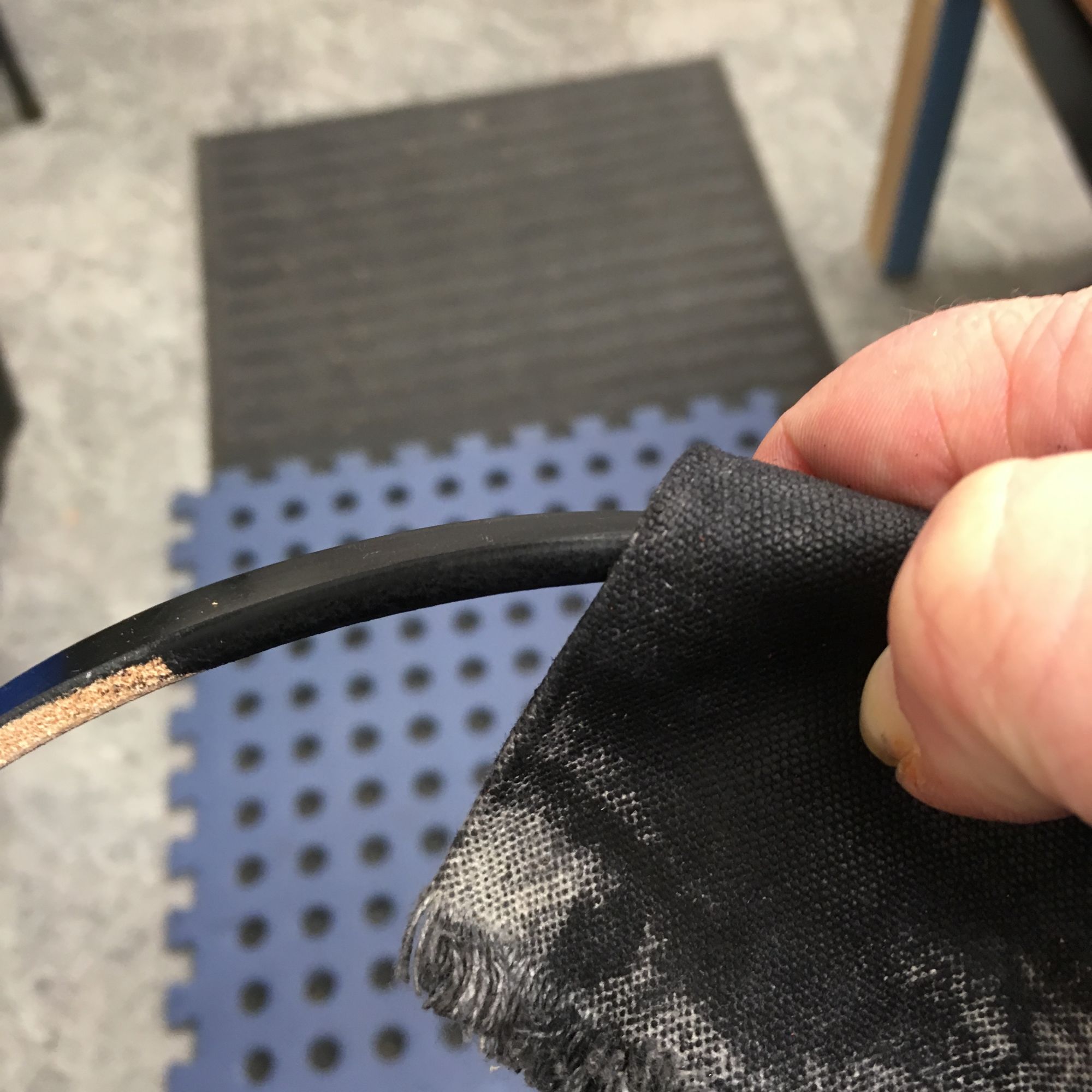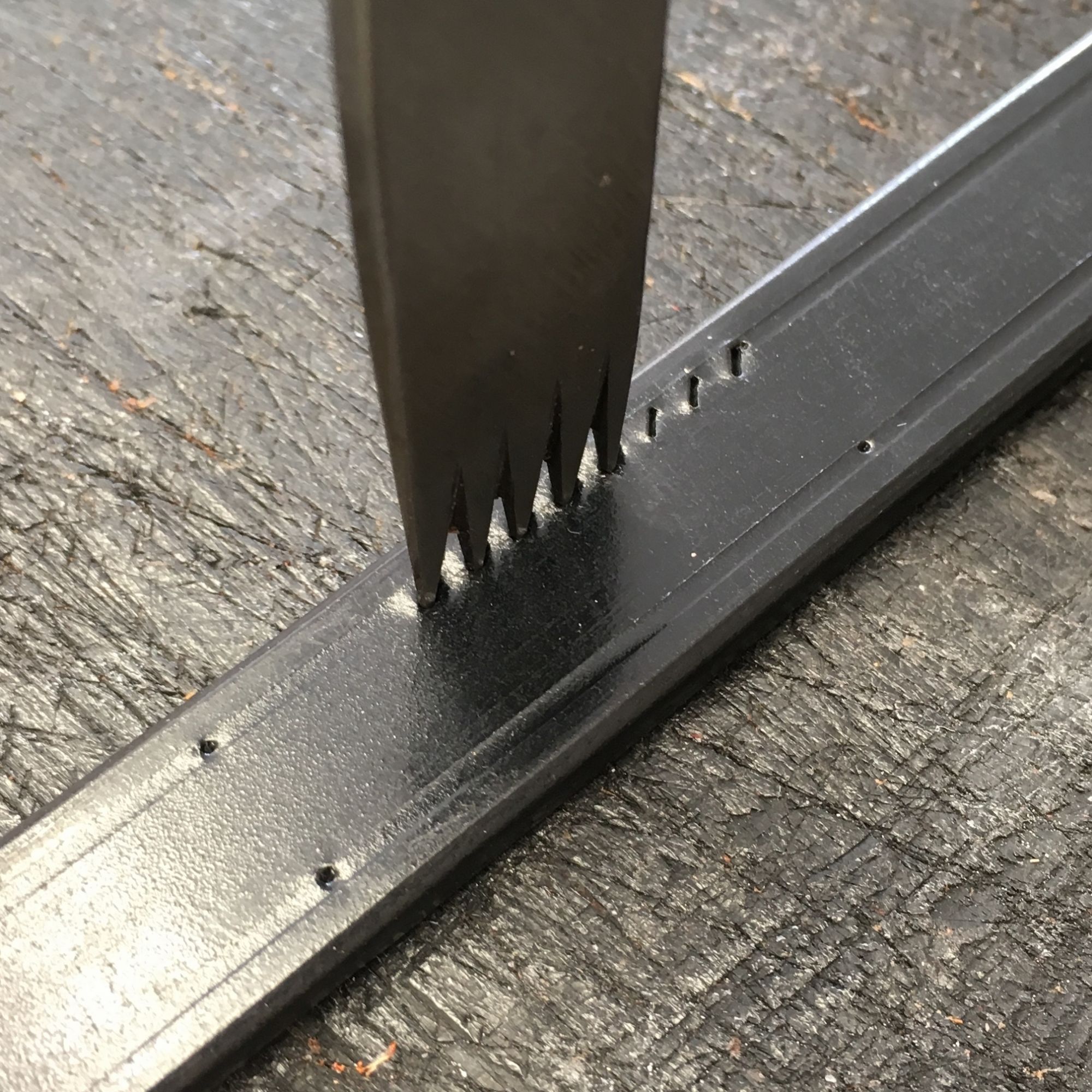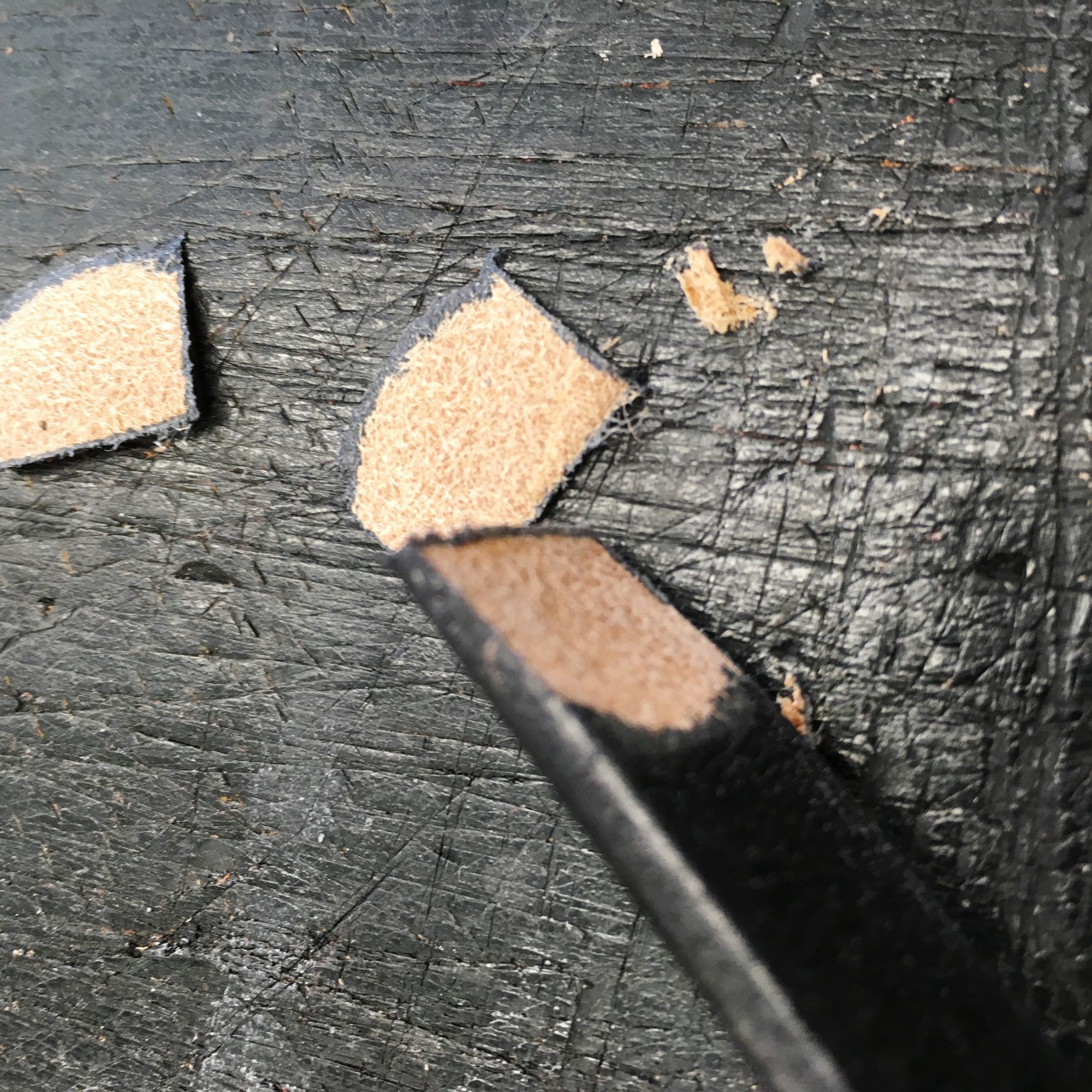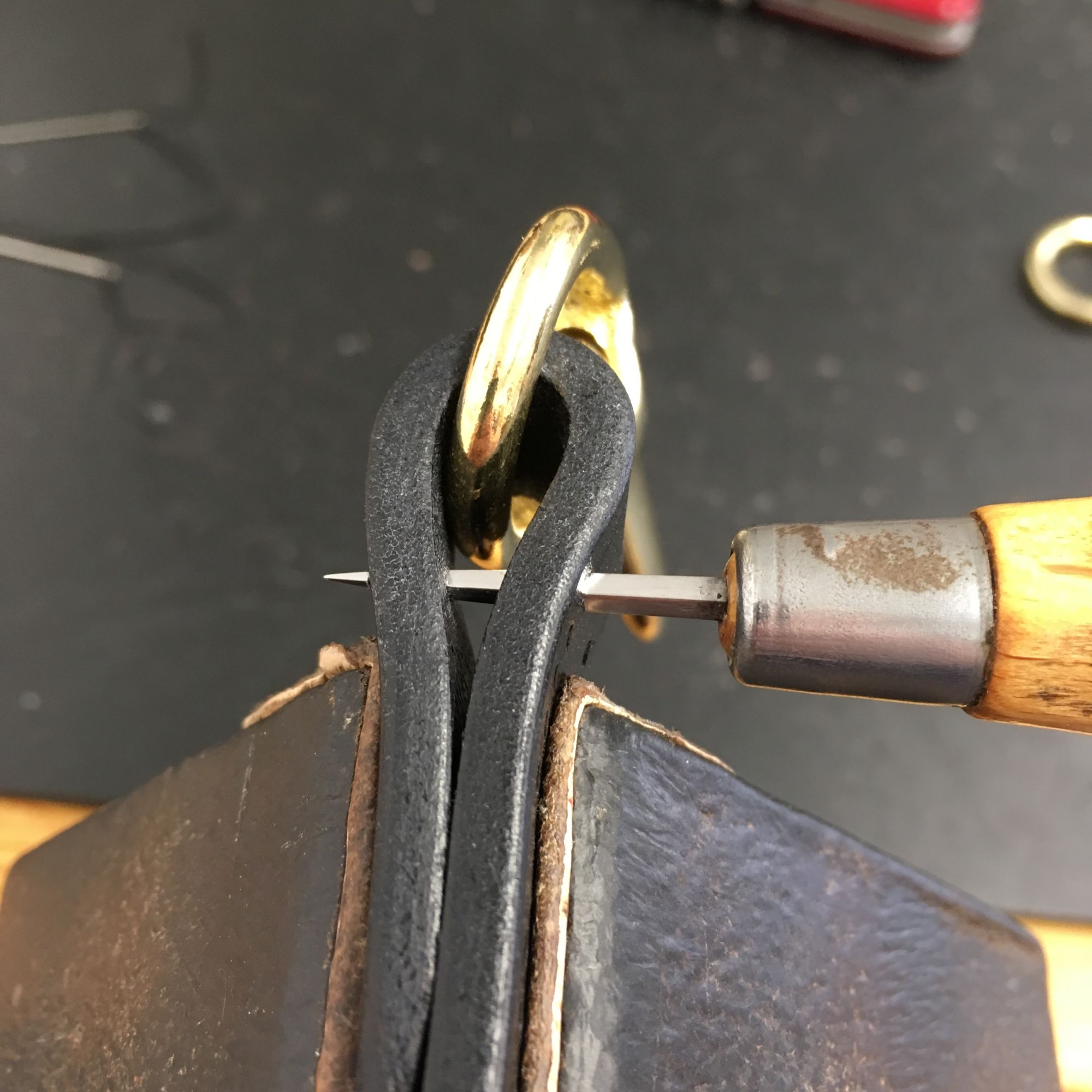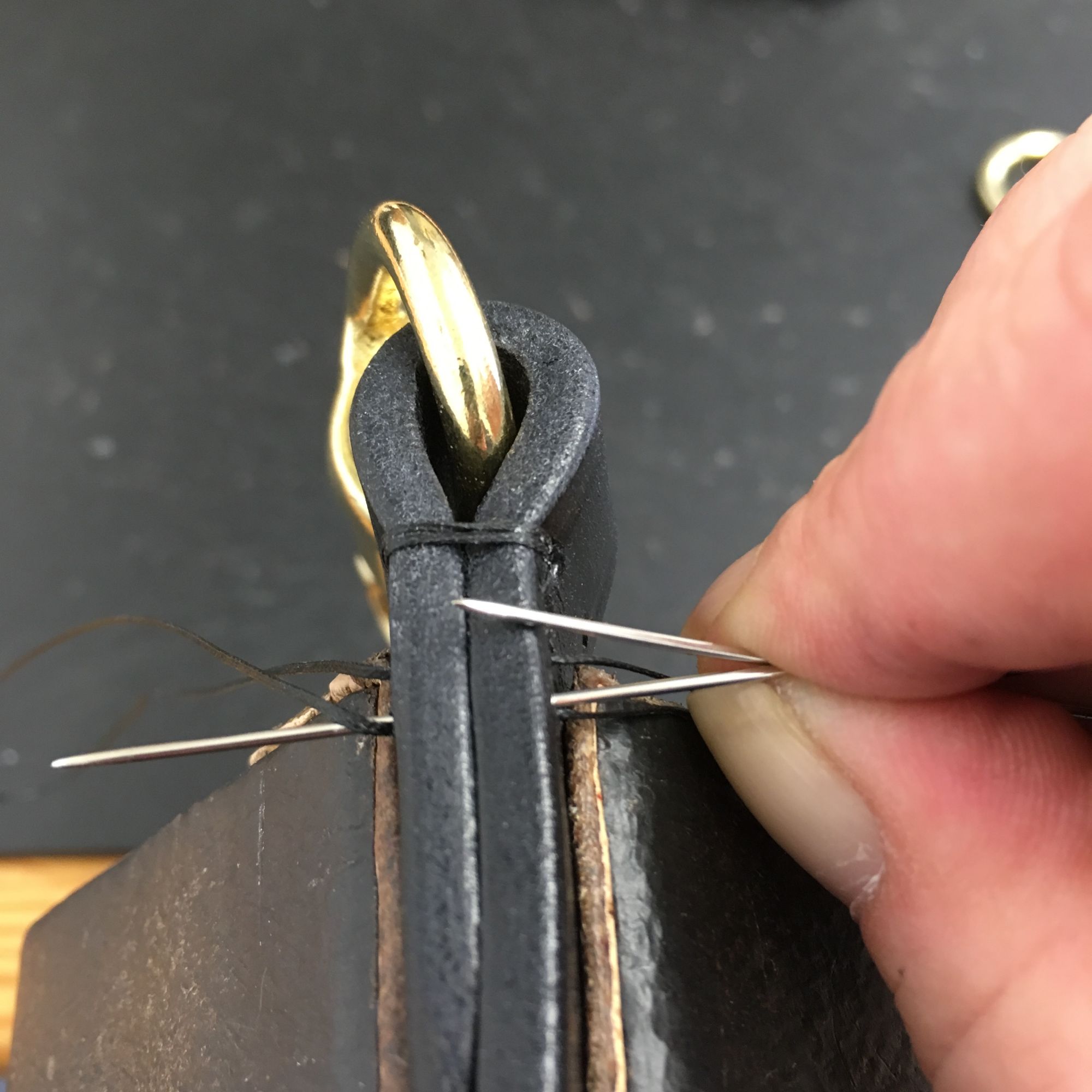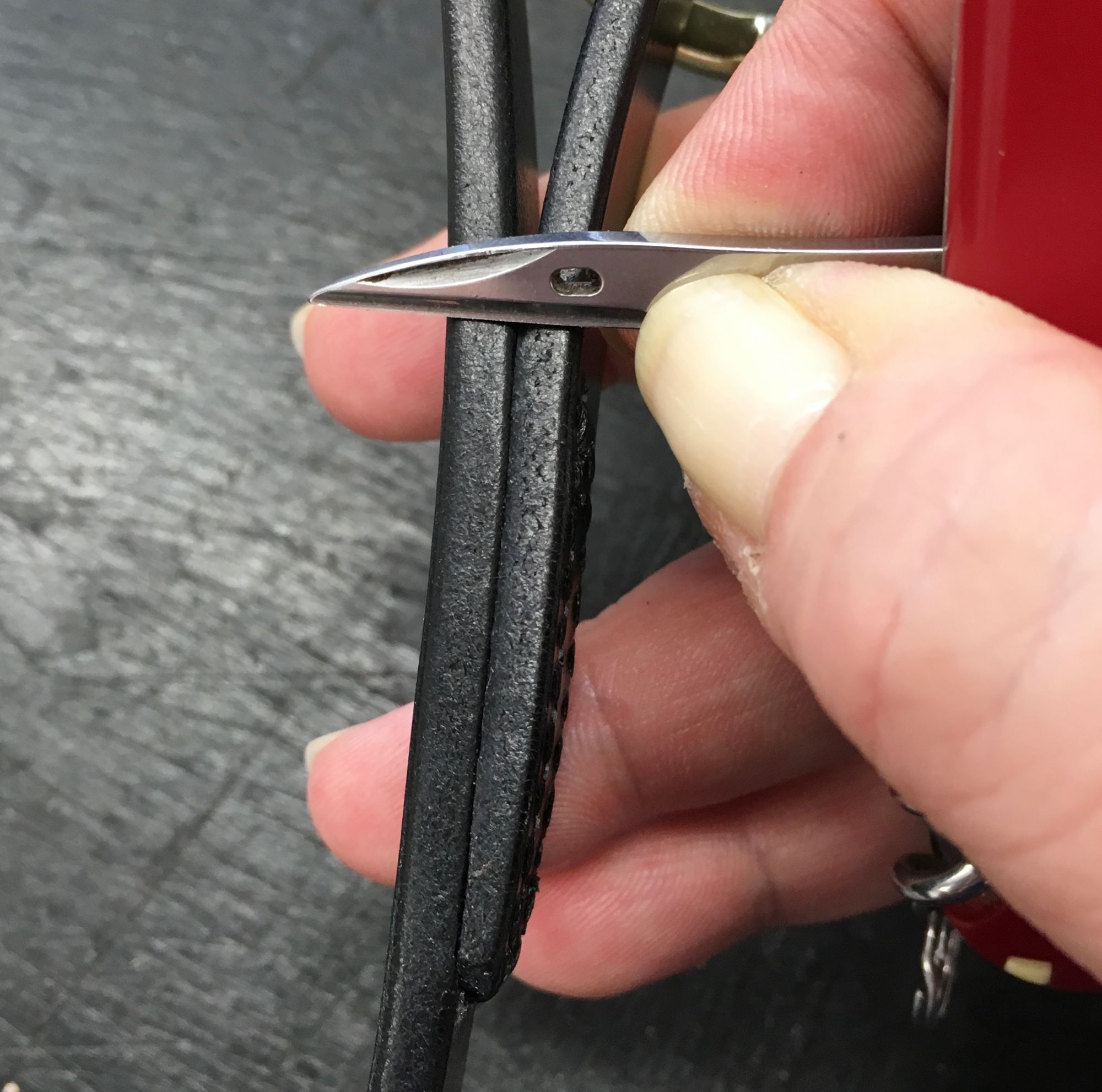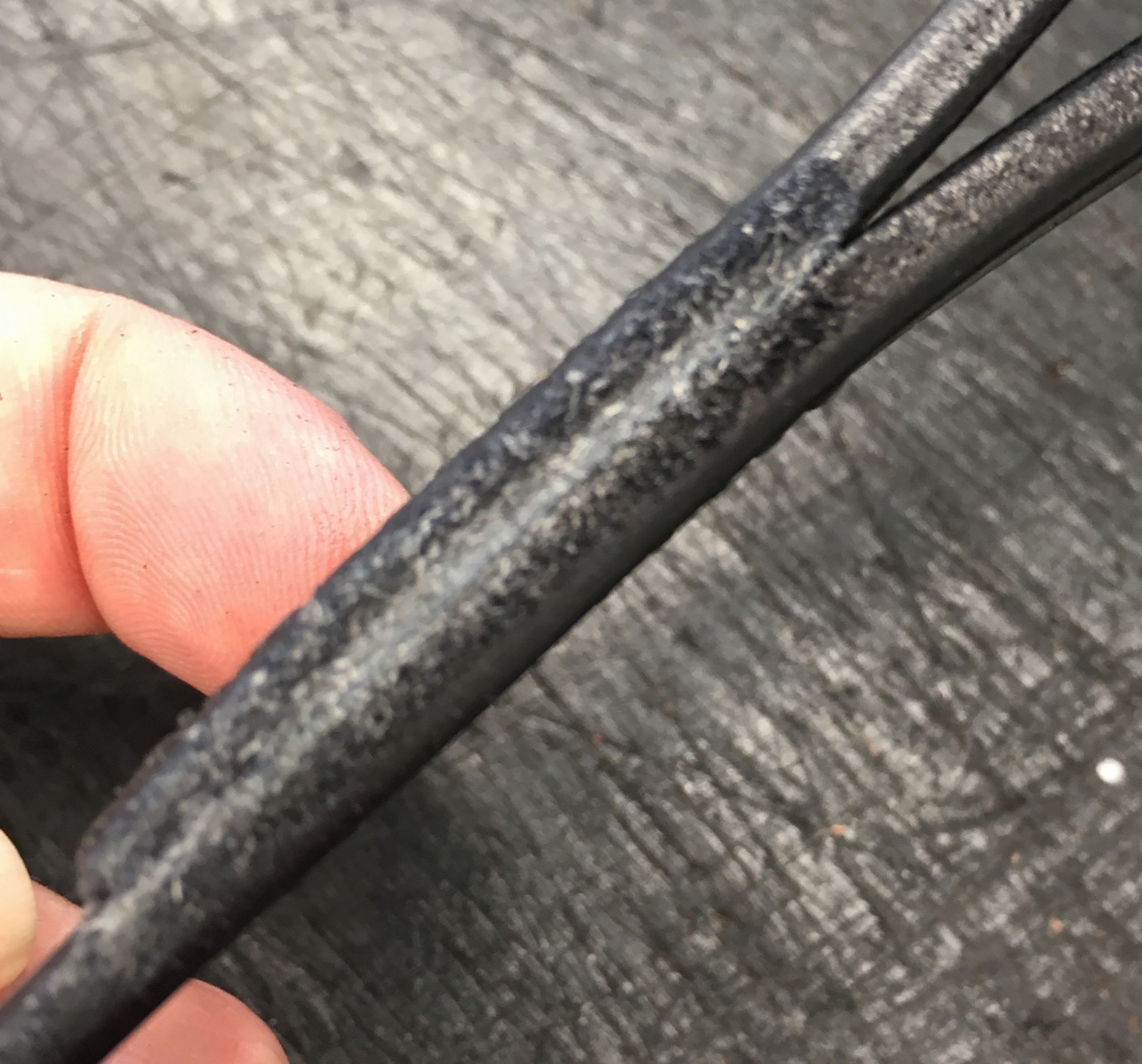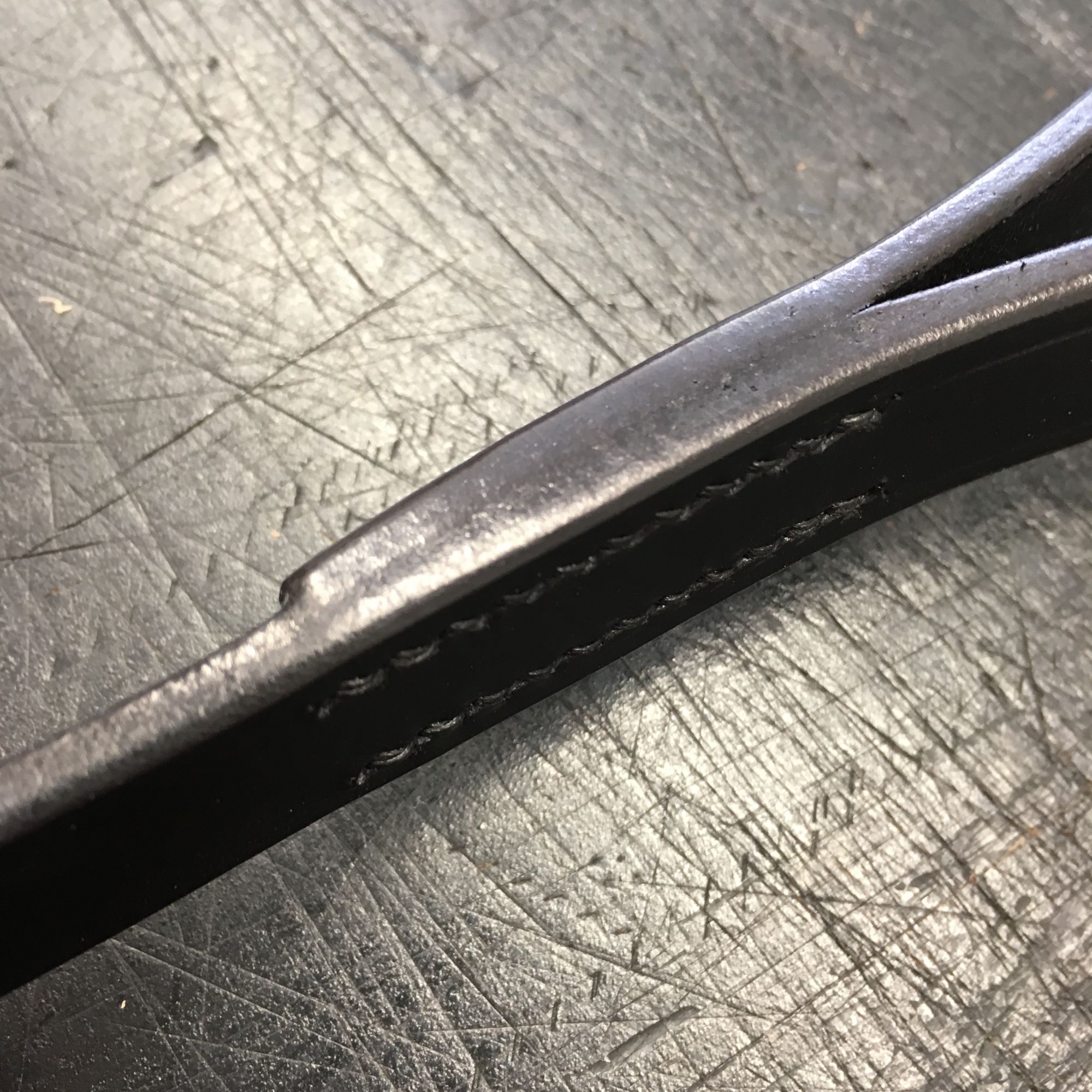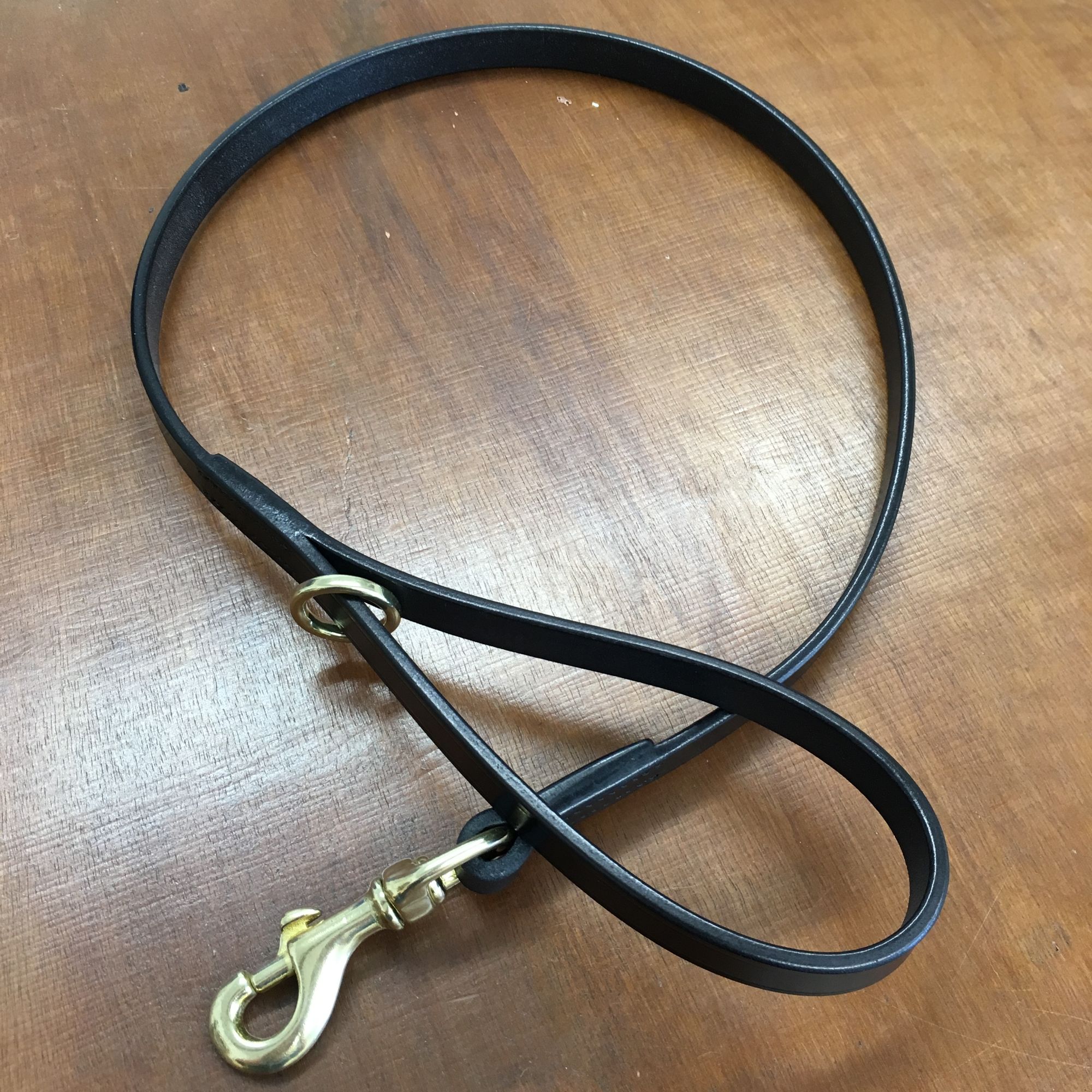How it's Made
I often get questions regarding the various stages that go into making an item so thought it may be useful to include here a brief description of the various stages of work that go into making your leather item.
In this case the images where taken while making a plain lead but whatever the item (excluding masks) all the stages are the same. Depending on what is being made produced it could take anything from 1 1/2hrs to 25+hrs to make an item. Not counting the pattern drawing or dye drying times.
I apologise in advance, especially to any leatherworkers reading this, for the very basic explanation of the stitching process. There is a little more to it than the pictures show but hopefully this gives you an idea of the process.
